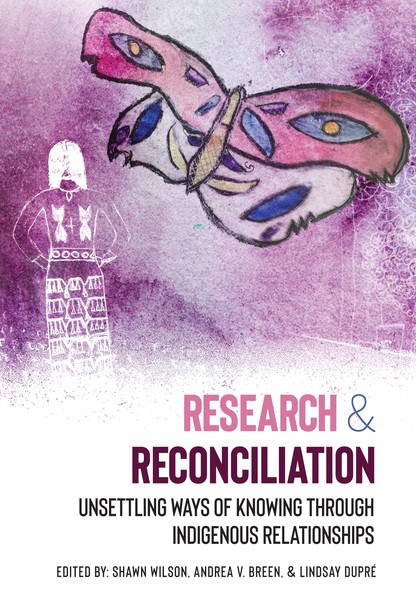New Publication: Distant, Invisible, Hidden Raíces. Indigenous Heritages of Central America: Renegotiation and Reconciliation
Dr Paul Edward Montgomery Ramírez publishes in edited volume Research and Reconciliation: Unsettling Ways of Knowing through Indigenous Relationships

Dr Paul Edward Montgomery Ramírez, York PhD and Humanities Research Centre Postdoctoral Research Fellow has published a chapter in Research and Reconciliation: Unsettling Ways of Knowing through Indigenous Relationships titled: Distant, Invisible, Hidden Raíces. Indigenous Heritages of Central America: Renegotiation and Reconciliation.
In this edited collection, leading scholars seek to disrupt Eurocentric research methods by introducing students, professors, administrators, and practitioners to frameworks of Indigenous research methods through a lens of reconciliation.
The foundation of this collection is rooted in each contributor’s unique conception of reconciliation, which extends beyond the parameters of Canada’s Truth and Reconciliation Commission to include a broader, more global approach to reconciliation. More pointedly, contributors discuss how effective research is when it’s demonstrated through acts of reconciliation.
Abstract:
Like elsewhere in the colonial world, heritages of indigenous peoples in Nicaragua have been and are in turbulent waters. Indigenous populations were subjected to enslavement and forced miscegenation by settlers to ‘save’ us from ‘savagery’. Later we were forced to give up language, communal lands, and customs in the name of ‘progress’. We were forced deny our cultures and to become ladino, to survive. We vanished in plain sight, limited to being extinct creatures of a forever gone past. Later, poets, nationalists, and revolutionaries would tap into a pride for their ‘sangre indígena’, but fail to recognize the indigenous people surrounding them.
Politics in Nicaragua have placed the mantle of ‘indígena’ largely on the indigenous groups along the Caribbean coast, while denying indigeneity to Spanish-speaking indigenous groups, causing us to be invisible in narratives and dialogues. Instead we were ‘artisans’ or market-workers, but never to be indigenous, despite our constant reminders. Within Nicaragua, the very people who aided in revolution returned to being marginal, our truths hidden. All the while, Nicaragua itself remains a marginal country not only in the world, but even in Latin America.
How then, do the indigenous in Pacific Nicaragua assert themselves? How do we reconnect to our heritage if our families have been driven away by civil war? How can reconciliation happen when we are widely believed extinct or not ‘truly’ indigenous?
The chapter is a narrative voicing Paul Edward’s experiences in navigating Indigenous identity, as a heritage professional and public archaeologist, and on personal levels. It surrounds his own indigeneity, as a person physically separated from his pueblo and from a family that hid its heritage out of necessity. This story also explores the advancement of prehispanic and colonial archaeologies and narratives of the past as an instrument to bring these pasts into the present, to re-negotiate the invisible narratives of Pacific Nicaraguan indigeneity. It examines ways in which Indigenous archaeologies can find a place in a country like Nicaragua, and how a publicly minded archaeology can search for paths to reconcile marginal peoples within a marginal country.